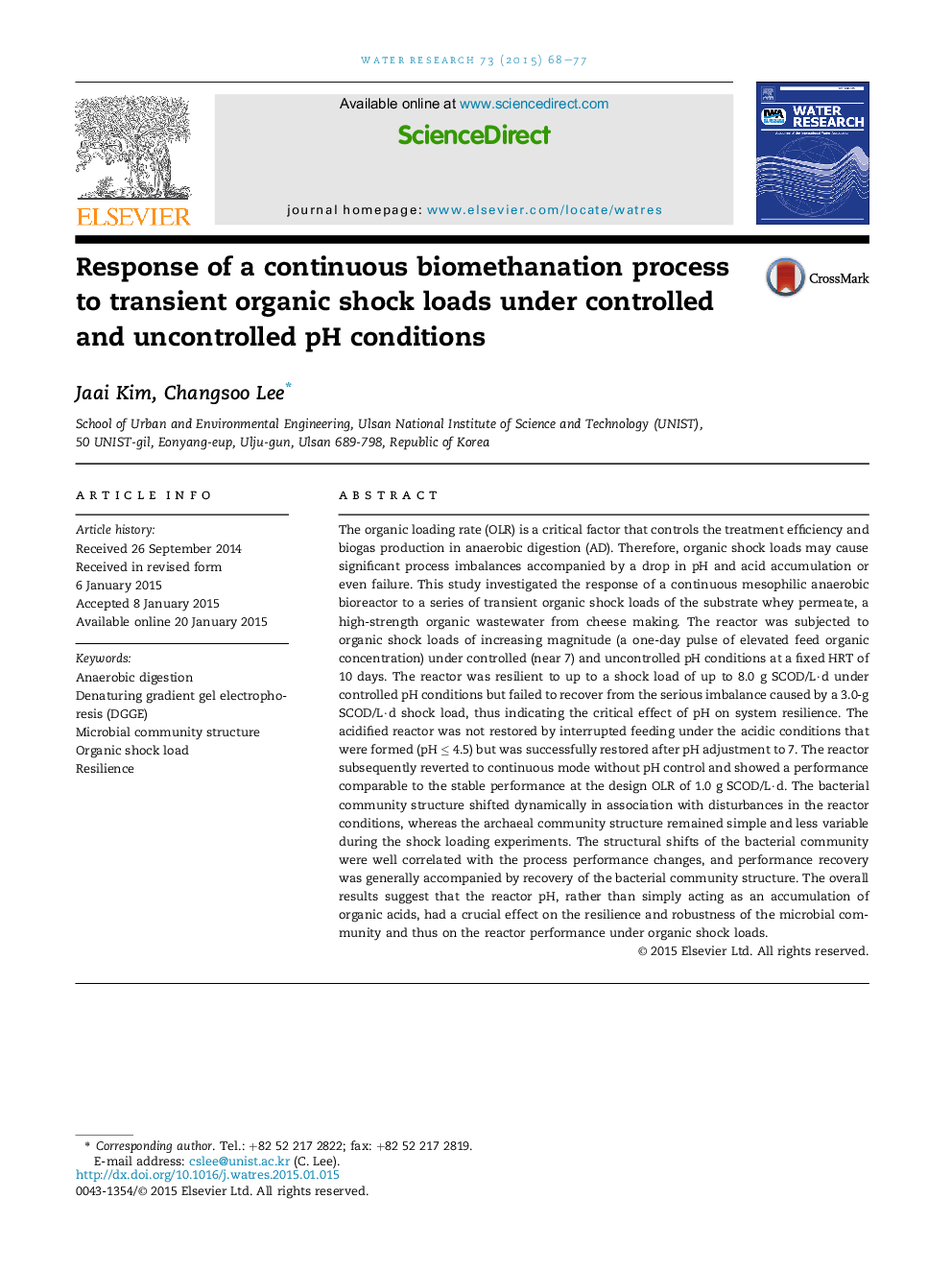| کد مقاله | کد نشریه | سال انتشار | مقاله انگلیسی | نسخه تمام متن |
|---|---|---|---|---|
| 4481229 | 1623095 | 2015 | 10 صفحه PDF | دانلود رایگان |

• The effect of transient organic shock loads was studied in a continuous anaerobic reactor.
• The reactor had far greater resilience under controlled than uncontrolled pH conditions.
• Shifts in bacterial community structure were correlated with performance fluctuation.
• Performance recovery was associated with recovery of bacterial community structure.
• The influence of pH on the resilience of microbial community and process performance was crucial.
The organic loading rate (OLR) is a critical factor that controls the treatment efficiency and biogas production in anaerobic digestion (AD). Therefore, organic shock loads may cause significant process imbalances accompanied by a drop in pH and acid accumulation or even failure. This study investigated the response of a continuous mesophilic anaerobic bioreactor to a series of transient organic shock loads of the substrate whey permeate, a high-strength organic wastewater from cheese making. The reactor was subjected to organic shock loads of increasing magnitude (a one-day pulse of elevated feed organic concentration) under controlled (near 7) and uncontrolled pH conditions at a fixed HRT of 10 days. The reactor was resilient to up to a shock load of up to 8.0 g SCOD/L·d under controlled pH conditions but failed to recover from the serious imbalance caused by a 3.0-g SCOD/L·d shock load, thus indicating the critical effect of pH on system resilience. The acidified reactor was not restored by interrupted feeding under the acidic conditions that were formed (pH ≤ 4.5) but was successfully restored after pH adjustment to 7. The reactor subsequently reverted to continuous mode without pH control and showed a performance comparable to the stable performance at the design OLR of 1.0 g SCOD/L·d. The bacterial community structure shifted dynamically in association with disturbances in the reactor conditions, whereas the archaeal community structure remained simple and less variable during the shock loading experiments. The structural shifts of the bacterial community were well correlated with the process performance changes, and performance recovery was generally accompanied by recovery of the bacterial community structure. The overall results suggest that the reactor pH, rather than simply acting as an accumulation of organic acids, had a crucial effect on the resilience and robustness of the microbial community and thus on the reactor performance under organic shock loads.
Figure optionsDownload high-quality image (153 K)Download as PowerPoint slide
Journal: Water Research - Volume 73, 15 April 2015, Pages 68–77